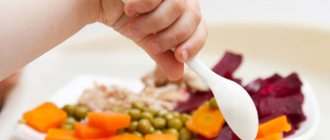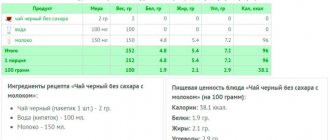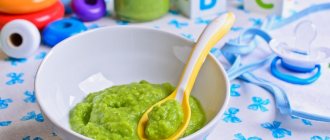Edited by an expert:
Nadezhda Primochkina, nutritionist - 01/12/2021
Nutrition is important for a child, especially one with allergies. Parents should understand that a proper diet for a child will alleviate allergy symptoms and also help avoid many diseases that can develop as a result of allergies: cough, runny nose, asthma.
What should be on the menu for an older child ? What to feed a teenager with allergies?
We will answer these and other questions further.
Meat on the menu for allergy sufferers
The following types of meat may be present on the menu of a child with allergies:
- Turkey;
- Rabbit;
- Horsemeat;
- Lean pork;
- Young beef;
- Chicken (not allowed for all children).
If a child is allergic to cow's milk, this indicates that the baby's body reacts negatively to cow's protein. Along with milk intolerance, allergies to products such as cottage cheese, sour cream, cream, butter, beef, sausages and sausages develop. Treatment is based on diet. Parents should strictly observe the restrictions, not including beef in the child’s diet, even in very small quantities. Typically, a specific reaction to milk protein, subject to diet, goes away by the age of three.
The following dishes can be prepared from meat for a child with food allergies:
- Minced meatballs (to prepare any meat except beef, grind, add chopped onion, sometimes rice) steamed or boiled in broth or water;
- Steamed meatballs according to the classic recipe (if the child is allergic to eggs, they are not added);
- Liquid gravy with minced meat (minced meat is fried with vegetables in a saucepan, water is added and simmered until cooked).
Specific diet
In this section it is worth considering the types of dietary nutrition for various diseases and symptom complexes and separately for food allergies to specific groups of irritants. Despite the fact that, in general, dietary tables are similar. Each case has its own characteristics.
Diet for respiratory allergies
If you are allergic to pollen (especially birch), it is important to exclude cross allergens.
With hay fever, the most important thing is to exclude cross allergens. This is necessary in order to avoid the development of oral allergic syndrome. Depending on which plant pollen becomes an irritant, there are lists of cross allergens.
More details on the rules of diet therapy for hay fever can be found here:.
In case of bronchial asthma, which often becomes a symptom or outcome of hay fever, the main symptom of which is broncho-obstructive syndrome, it is extremely important to exclude honey from the diet so as not to provoke an episode of broncho-obstruction and, as a consequence, suffocation, cough, heaviness in the chest.
Diet for skin allergies
Photo: Atopic dermatitis
It has been proven that when it comes to treatment for children with allergic dermatitis caused not by food allergies, but by direct contact of the allergen, as well as with eczema and urticaria provoked by this factor, diet therapy does not play a significant role.
A minimal restriction of highly allergenic foods during periods of exacerbation is sufficient.
But a hypoallergenic diet for children with atopic dermatitis should be selected much more carefully and with caution. This is especially important if atopic dermatitis is caused by food allergies.
In this case, elimination of the trigger factor is actually etiopathogenetic therapy and determines the success of treatment. But even in the absence of an immediate reaction of an allergic person to food products, it is necessary to follow a nonspecific diet.
You can read more about the diet for atopic dermatitis here.
Diet for food allergies in a child
With food allergies, the key is to eliminate the trigger allergen itself, as well as all cross-irritants.
There are several main options for dietary tables:
- diet without milk;
- diet for hypersensitivity to cereals;
- diet for hypersensitivity to chicken egg white;
- diet for soy allergy;
- diet for allergies to yeast and mold.
Dairy-free diet
Photo: Manifestations of an allergy to milk protein
This type of dietary food can be prescribed for hypersensitivity to cow's milk protein. In the most difficult situation, when the child cannot tolerate milk or dairy products, you should refrain from consuming:
- cow's milk;
- any variants of powdered milk;
- margarine;
- whey;
- kefir;
- fermented baked milk;
- cream;
- yoghurts;
- cottage cheese;
- ice cream;
- cheese;
- condensed milk
Often traces of milk protein may contain:
- confectionery, sweets;
- creams and sauces;
- waffles;
- biscuit;
- sausage and frankfurters.
This is why it is so important to read the ingredients of products before giving them to a child with allergies. How might milk protein be labeled on packaging? These are the following names:
- casein;
- casein hydrolysate;
- buttermilk;
- sodium caseinate;
- potassium caseinate;
- calcium caseinate;
- lactalbumin;
- lactoglobulin.
It is worth noting that many allergy sufferers who are sensitive to cow's milk can easily tolerate goat's and mare's milk, beef, and fermented milk products. In this case, the selection of the diet should be done empirically under the supervision of an allergist.
It is necessary to compensate for the lack of milk and dairy products with lean meat, poultry, soy, and legumes. Monitoring the intake of calcium into the body is mandatory. Age standards:
| Age | Norm, mg/day |
| 0-6 months | 300-400 |
| 6-12 months | 600 |
| 1-7 years | 800-1000 |
| >7 years | 100-1200 |
You can replenish calcium deficiency with vitamin complexes, as well as fish, legumes, and vegetables. Taking vitamin D is mandatory.
Diet for grain allergies
The following should be excluded from the child’s diet:
- wheat-based dishes;
- porridge;
- cereal side dishes;
- bread;
- breadcrumbs;
- bran;
- cookies, rolls;
- pasta;
- cupcakes;
- mayonnaise and ketchup;
- chocolate;
- soy sauce;
- ice cream.
It is important to pay attention to the following names on the packaging:
- vegetable protein (including its hydrolysates);
- vegetable starch;
- malt and flavorings based on it;
- monosodium glutamate.
You need to be careful with emulsifiers, thickeners, and flavorings, which also often contain cereal proteins.
You can compensate for these products with barley, oats, rye, rice, buckwheat, and corn flour. However, this should be done with caution, keeping in mind the possibility of developing cross-allergy.
Diet for egg allergies
It is necessary to remove from the foods you eat anything that contains egg white:
- omelette;
- marshmallows;
- some baked goods;
- mayonnaise and other sauces;
- sausages, colabs;
- nougat;
- meringue;
- sherbet.
You should beware of the following names on the label:
- albumins;
- globulins;
- lysozyme;
- lecithin;
- livetin;
- ovomucin;
- ovomucoid;
- Vitellin.
To replace egg white (which is usually required for baking), you can use flaxseed, soy flour and cottage cheese, gelatin, and potato starch. In addition, there are many recipes available for dishes that do not require eggs.
Diet for allergies to soy, yeast
It is necessary to exclude dishes in which this product is used, incl. some sausages, sausages, minced meat, dough, coffee, chocolate, ice cream, margarine. Soy sauce should not be consumed.
If you are hypersensitive to yeast, you should not:
- baking;
- vinegar;
- sauerkraut;
- dairy products;
- fruit juices;
- kvass;
- cheese;
- alcoholic drinks, especially beer (especially important for teenagers!).
Diet for other diseases
For hemorrhagic vasculitis, which also has another name - allergic purpura - diet therapy is very important. On the one hand, often the cause of autoimmune aseptic inflammation is food allergy. On the other hand, one of the main elements of the treatment of hemorrhagic vasculitis is the prescription of hormonal drugs.
This type of medication causes a constant feeling of hunger, which, if eaten uncontrolled, can lead to sudden weight gain. That is why monitoring a child’s diet during illness is very important.
However, this disease is not treated on an outpatient basis; all children are required to be hospitalized, so it is easier to follow a diet. Should be excluded:
- causative allergens (if any);
- products that have ever caused adverse reactions, including allergies or food intolerances;
- obligate allergens.
For angioedema, the diet should also be selected in accordance with the allergy history. If this condition was caused by an insect bite or the administration of a drug, following a nonspecific diet is sufficient. In the case where the swelling was caused by a food allergen, it is absolutely necessary to exclude it.
Cottage cheese for food allergies
In a child, cottage cheese intolerance can manifest itself externally and internally. Usually the baby has skin rashes and the oral mucosa swells. But the external manifestations are not as scary as the patient’s sensations during the development of an allergic reaction. The baby experiences nausea, diarrhea, vomiting, and painful cramps in the stomach. A runny nose and watery eyes may also bother you.
The diet consists of completely excluding cottage cheese from the menu. It must be remembered that during heat treatment (in casseroles, pies, dumplings) this product remains allergenic, since the reaction is provoked by protein, which does not decompose at this temperature. Parents should be especially careful when introducing cottage cheese as a first complementary food. Curds for baby food also provoke allergies.
A reaction to curds is possible due to the unnatural composition of the product.
Types of diet for children with allergies
The ideal option for parents is to get tested. For this purpose, blood may be taken from the child or allergy tests may be performed. The choice of method depends on age, financial and time capabilities. For example, to conduct allergy tests, several visits to a specialist are required; patients are often sent to the hospital and related tests are performed.
Not every person can quit work or take a vacation. Some parents do not immediately seek help and are treated with improvised means. Tests may be delayed due to worsening allergies. To be sure, you must first remove all reactions, take a break from taking antihistamines, and then begin diagnostics. Therefore, a diet is prescribed before a referral for examination is issued.
There are two types of diet for childhood allergies:
- nonspecific diet. Suitable for people of any age. The essence is clarification, exclusion of certain products from the menu. The allergen can be determined medically or by observation. For example, many parents notice their child’s reaction to a certain fruit, dessert, dish;
- elimination diet. Suitable for young children. The essence is the competent introduction of complementary foods, the exclusion of potentially dangerous allergens. So, parents gradually introduce foods with gluten, sugar, and bright colors. At the first reactions, the diet is adjusted with the help of a pediatrician.
Any diet, regardless of type, is aimed at relieving symptoms. With the additional use of antihistamines, you can quickly remove itching, redness, rash, and cure an allergic cough. The second goal of therapeutic nutrition is to reduce the negative impact of antigens. Sometimes dietary nutrition is used to identify the culprit product. A person eats hypoallergenic food for a long time, then potential “pests” are gradually introduced.
Eggs in the diet for food allergies
In eggs, the reaction is provoked by protein. It contains protein compounds that provoke allergies in children. Interestingly, if an egg is boiled for a long time, its allergenic properties become less pronounced. In order for the harmful properties to be very weakly expressed, you need to cook the product for at least 10 minutes.
But the yolk of an egg can be included in the diet for allergies in children. Care must be taken to ensure that even a small part of the white does not get into the yolk when separated. Otherwise, an immediate skin reaction occurs. It is better not to give eggs to children under one year old at all. If a baby is diagnosed with an allergy to eggs, then the diet must be followed for several years. Basically, after this, the allergy goes away (to confirm this, a special test is performed after 2 years).
Diet porridge for children's menu
- Oatmeal;
- Buckwheat;
- Boiled rice;
- Millet porridge;
- Corn;
- Pea porridge;
- Chickpea puree;
- Fresh frozen beans.
Porridges are prepared salty and sweet, adding fructose in some cases. Buckwheat and oatmeal are boiled using water. Since there are restrictions on milk for children with allergies, no butter is added. The porridge is flavored with sesame oil if desired. Raw rice is crushed before cooking and then cooked in the oven in a special clay pot. You can also steam rice with the addition of onions, minced meat and peas.
It is better to freeze green peas to add to dishes for food allergies in the summer yourself.
To prepare chickpea puree, boil it and then grind it in a blender. The dish is suitable as a side dish for cutlets or meatballs. But you can not only prepare hypoallergenic porridge from buckwheat, but also use it as an ingredient for making cutlets. To form the products, the cereal must first be ground and then mixed with minced meat. Lazy cabbage rolls are considered a nutritious dish; they are prepared according to the usual recipe for children prone to food allergies.
Bread in a hypoallergenic diet
Wheat allergies occur quite often in children. If the disease occurs, then the bread products on the child’s menu should not contain wheat flour. Despite the fact that wheat is the main cereal product, it is also considered a powerful allergen. Basically, the reaction occurs against the background of intolerance to gluten, which is contained in flour. This component is also found in barley and oats.
The “Darnitsky” variety is suitable for bread, or you can replace wheat products with special dietary bread.
Gluten allergy can develop due to the introduction of gluten-containing foods too early. Often a similar reaction accompanies childhood hay fever, when pollen from cereals and grasses becomes an allergen. Even if a diet has not yet been recommended for your child, there is no need to rush into introducing gluten-containing foods into his diet. The immune system often accepts them as foreign, resulting in an allergy. Gluten is also found in traditional semolina, so you should not start giving it to your baby too early.
Allergens
An allergy is an individual intolerance to a particular product, therefore the allergens are different in each case. However, all of them can be classified into three groups, which are presented in the table below.
| № | Group Description | Examples |
| 1 | High risk of a negative reaction from the child’s body | Milk (cow), fish products and seafood, chicken, meat broths (regardless of the type of meat), eggs, citrus fruits, carrots, strawberries, etc. |
| 2 | Average risk of a negative reaction from the child’s body | Rabbit, pork, buckwheat, rice, currants, apricots, bananas, cherries, potatoes, cranberries, etc. |
| 3 | Low risk of a negative reaction from the child’s body | Some fermented milk products, horse meat, green vegetables, pumpkin, plum, watermelon, etc. |
Products that most often cause allergic reactions
Statistics say that in 90% of cases, allergic symptoms in babies are caused by milk. Many people consider cow's milk to be a good companion to first complementary foods, which ultimately results in digestive problems for children. Rejection of this fluid usually occurs in the first years of life. The cause of the body’s negative reaction is protein components (for example, albumin), which are contained in large quantities in milk. A good alternative is fermented milk products, which are much less likely to cause food allergies and are included in the low-risk group.
In second place in terms of frequency of negative reactions is fish - for almost everyone who has ever experienced an allergy, it is included in the list of significant allergens. A child’s body may not tolerate either certain varieties or seafood in general. The peculiarity of fish allergy is that it often does not go away and is observed throughout a person’s life. The main reason for intolerance to this product is specific proteins contained in river and sea products, which, moreover, do not disappear during heat treatment.
List of allergenic products
In third place are chicken eggs. A negative reaction to food of this kind is most often accompanied by undesirable reactions of the body to poultry meat and broths based on it. It is noteworthy that egg white is much more likely to cause allergy symptoms than yolk. Intolerance to grains such as rye and wheat is also often observed; allergies to rice and buckwheat are less common. In recent years, there has been an increase in cases of allergies to soy, which has become overused as a milk substitute.
Children under the age of six months are most often characterized by multiple allergies, when the body is susceptible to not one, but several foods. One of the varieties of this disease is cross-allergy, which consists in the manifestation of symptoms when consuming the main product and its analogues: for example, milk and sour cream, apple and pear, etc.
Vegetables and fruits
You can diversify the menu of a child with allergies with the following vegetables:
- Cabbage (all types);
- Zucchini;
- Cucumber;
- Jerusalem artichoke;
- Parsnip;
- Squash;
- Onions (green and onions);
- Celery;
- Potatoes (if the child is allergic to starch, then they are soaked in water for at least 12 hours and then washed before cooking).
To make dishes more interesting in taste, they are seasoned with parsley, dill, and bay leaf. Vegetables are prepared in the form of purees, stews, casseroles, vegetable soups, and steamed. Vegetable dishes are flavored taking into account the diet with the following oils:
- Olive (cold first pressing only);
- Linen;
- Sesame.
Pumpkin and carrots
These fruits are considered one type of allergen. They have a similar composition, therefore, as a rule, if a child is allergic to pumpkin, the diet also includes a restriction on carrots. These products are not recommended as first complementary foods. They contain proteins whose composition resembles plant pollen. In the development of a reaction to pumpkin and carrots, the factor of heredity is of great importance.
In most cases, the disease is provoked by raw carrots and pumpkin, but clinical cases have been recorded in which symptoms developed after eating heat-treated foods. Even if you don’t have a food allergy, you shouldn’t eat carrots in large quantities. The norm for a child is half a medium carrot per day (for an adult – a whole medium-sized root vegetable).
The mother of an allergic baby is also required to follow a diet while breastfeeding. If a child under one year old eats formula, he can eat:
- Casein mixtures;
- Soy formula (not for all children);
- Hypoallergenic purees from vegetables, fruits, berries;
- Hypoallergenic meat purees from lamb, rabbit, turkey (preferably with a minimum starch content).
Introducing the first complementary foods to children prone to allergies should be done with extreme caution. Products should be added to the menu one at a time in very small quantities. It's important not to rush. Even if developing a diet takes a lot of time, it is worth it. With the help of perseverance, patience and consistent actions, most parents manage to maintain the health of their child.
Mixtures with casein are recommended for those children who are prone to excess weight. This component is also included in sports nutrition mixtures. It helps you lose fat mass while building muscle.
Watermelons
This sweet and quite healthy delicacy, loved by children of all ages and adults of all ages, traditionally decorates our tables. In addition to its refreshing taste, it replenishes the body with microelements and a complex of vitamins. Unfortunately, it can also cause allergies. The fact is that during the process of growing and storing, watermelon absorbs nitrates and harmful substances. Accordingly, if it was grown or sold near a road or an industrial enterprise, then its pulp becomes poisonous for all family members. Only an allergist can accurately determine what caused the child’s reaction - the watermelon itself or the substances accumulated in the pulp.
Grapes as an allergen
The diet of a small child necessarily limits the consumption of grapes. It often provokes quite strong allergic reactions. Allergies can be associated not only with intolerance, but also with the increased sensitivity of the baby’s immune system and various negative factors from the external environment. Delicious berries on a child’s menu from an early age provoke skin rashes, sneezing, coughing, swelling of the mucous membranes, and runny nose.
Grapes are a product that is difficult to digest. Naturally, at an early age (especially up to three years), children should follow a diet that consists of foods that do not put a lot of stress on the digestive system. Dark grapes contain the most allergens. Unlike many other allergens, these juicy berries do not lose their allergenic properties during heat treatment, so children should not be given not only grapes themselves, but also juices, compotes made from them, and raisins.
In some cases, the reaction is caused not by the grapes, but by the substances with which they are treated. It is a perishable berry. The true cause of a child's allergies is determined by an allergist through a series of studies. If the symptoms are not related to grapes, then before the next use they are soaked in water and then washed thoroughly under running water.
Tomatoes as allergens
Scientists include red pepper, spinach and cabbage in the group of “tomato” allergens. It is possible to correctly determine the antigen that caused the allergy only in a special center. If the diagnosis is confirmed, the baby will be recommended a diet without dangerous vegetables. Parents need to be careful, as these products are part of many soups, salads and sauces. You need to especially carefully monitor the composition of dishes for children under three years of age.
Non-specific diet
A nonspecific diet implies the exclusion of all highly allergenic foods. It is prescribed on the first visit to an allergist with complaints of hypersensitivity reactions.
Elimination diets of the widest possible spectrum are used. According to the opinion of I.V. Borisova, professor of the Siberian Branch of the Russian Academy of Medical Sciences, all products are divided into three types according to the degree of their allergenic activity. Products highlighted:
High activity:
- chicken eggs;
- milk;
- fish products;
- chicken meat;
- tomatoes;
- citruses;
- bananas;
- baker's yeast;
- chocolate products, cocoa beans;
- all types of nuts;
- melon;
- celery;
- any spices.
Medium activity:
- beef;
- pork meat;
- horse meat;
- turkey;
- wheat;
- rye products;
- rice;
- barley;
- oat products;
- carrots;
- cucumbers;
- beets;
- soy;
- peas;
- beans;
- apricots;
- apples;
- grape;
- kiwi;
- pineapples;
- raspberries;
Low activity:
- lamb meat;
- rabbit meat;
- buckwheat;
- zucchini;
- cabbage;
- turnip;
- pumpkin;
- prunes;
- pear;
- watermelons;
- salad;
- blueberries;
- cranberries;
- lingonberries.
The Union of Pediatricians of Russia offers a similar scheme for the distribution of products according to their allergenicity:
Table: Diet for allergies in a child from the Union of Pediatricians of Russia (part 1)
Table: Diet for allergies in a child from the Union of Pediatricians of Russia (part 2)
Dr. E.O. Komarovsky names the six most allergenic foods:
- egg;
- soy;
- peanut;
- milk protein;
- wheat;
- fish.
Hypoallergenic diet according to Ado for children
Photo: Professor Andrey Dmitrievich Ado
A.D. Ado, a Soviet pathophysiologist, immunologist and allergist, studying the trigger mechanisms of allergic reactions, found out that there are products that are practically obligate (obligatory) allergens, and there are those that are relatively safe in terms of allergies.
The Ado diet for children with allergies, formed back in 1987, is based precisely on this: eliminating “aggressive” foods and replacing them with more gentle ones.
Advantages of this diet:
- a specific list of foods that should not be consumed, rather than a lengthy definition of “hazardous food”;
- exclusion of all allergens at once, which ensures rapid elimination of clinical allergy symptoms;
- the ability to introduce obligate allergens into the diet one at a time, finding out exactly what irritant a reaction develops to.
However, this technique also has disadvantages:
- extreme non-specificity;
- lack of focus on the individual characteristics of each child.
What a child can and cannot do with this hypoallergenic diet
According to Ado, you can consume the following foods:
- boiled beef;
- soups from cereals or vegetables;
- “sour milk” (curd mass, yogurt, kefir products);
- butter, olive, sunflower oils;
- buckwheat, rolled oats, rice;
- unsweetened bread (white);
- cucumbers (fresh only);
- parsley, dill;
- baked apples;
- sugar;
- tea;
- apple compote.
It is imperative to remove from the diet:
- any citrus fruits;
- any nuts;
- fish and seafood;
- all poultry (including turkey);
- chocolate and cocoa;
- coffee;
- smoked meats;
- spices;
- tomatoes;
- eggplant;
- mushrooms;
- chicken and quail eggs;
- milk;
- strawberries, wild strawberries;
- pineapples;
- baked goods (especially fresh);
- honey;
- alcohol (relevant for older teenagers).
Hypoallergenic diet menu for children for 7 days (according to Ado)
Thus, the diet menu for children for a week might look like this:
| Day of the week | Breakfast | Dinner | Afternoon snack | Dinner | Second dinner |
| Monday | Oatmeal with water, sandwich with butter, sweet tea | Vegetable broth soup, broccoli with boiled tongue, cabbage salad with vegetable oil, apple compote | Hard biscuits, peach juice | Mashed potatoes, beef meatballs, tea | Kefir, gingerbread |
| Tuesday | Pancakes on water with apple jam, chicory | Buckwheat porridge on water, beef stroganoff, tea | Apple, savory cookies | Stuffed cabbage rolls, tea | Ryazhenka, savory cookies |
| Wednesday | Five-grain porridge with water, sandwich with butter, tea | Vegetable puree soup, vegetable stew with sausage, tea | Drinking yogurt, Viennese waffles | Stewed cabbage with sausage | Kefir, gingerbread |
| Thursday | Yogurt, banana, bread, tea | Noodles, ground beef, steamed or fried without oil, dried fruit compote | Prunes | Vegetable stew with sausage, cranberry juice | Carrots with sour cream and sugar |
| Friday | Baked apples, raisins, cherry juice | Pea soup with vegetable broth, mashed potatoes with stewed beef, cabbage salad, tea | Yogurt, puff pastry made from yeast-free dough | Boiled rice, cauliflower, green beans, tongue, rose hips | Kefir, gingerbread |
| Saturday | Dairy-free rice porridge, toast with cheese, chicory | Buckwheat porridge with beef meatballs, tea | Dried apricots | Cucumber salad with olive oil, vegetable puree soup | Ryazhenka, cookies |
| Resurrection | Cottage cheese casserole with jam, tea | Boiled beef, cabbage salad, chicory | Cottage cheese with banana | Sausage noodles, peach juice | Yogurt, dried fruits |
It is worth noting that this diet is suitable for a child of any age (over 2 years), but is approximate and requires adjustment in portion sizes.
In addition to the hypoallergenic diet according to Ado, vitamin therapy is required.
In addition, you should try to exclude from your diet products with dyes, flavors, emulsifiers and other unnatural additives.
Sweets and allergies
If a child has severe itching in the face, arms, legs and neck, diathesis, then most likely it is an allergy to sweets. Sweets themselves do not provoke the disease. The reason is in the ingredients of the products. It's all because of the animal protein that is used to make desserts. Instead of immediately eliminating all sweets from your child’s menu and putting him on a strict diet, you should go to an allergist and determine what exactly led to this situation.
Limiting sweets makes the child irritable. Without glucose, the brain becomes less active, and the baby quickly gets tired. In addition, children perceive a ban on their favorite desserts and diet not as a measure to treat food allergies, but as a punishment. This can cause mental disorders.
You can contact our website specialists for advice. To do this, simply ask a question without leaving this page. You can get advice on your baby's diet right now.
Honey as a cause of allergies
Honey is a multicomponent product, so allergies in a child under three years of age or older are usually provoked by one of its components. Usually the reaction is associated with an allergy in the child to the pollen of one of the plants. During processing, pollen partially loses its allergenic properties, but the remaining ones are enough for the baby to develop a disease. If you correctly determine which plant pollen is an allergen, then the child will not have to follow a strict diet: honey with pollen from flowers that are safe for the baby can be given as food.
Allergy centers conduct special studies. They allow you to identify the allergen as accurately as possible. The disease develops quite rapidly in children and, as a rule, requires symptomatic treatment. But in some cases the manifestations are so severe that the little allergic person has to be hospitalized.
Diet for food allergies to fish
The cause of the reaction to fish is parvalbumin, a muscle protein. The diet in this case should be very strict. An allergic child with bronchial asthma may experience anaphylactic shock after eating a small portion of a dish containing such a product. An allergy to such a protein manifests itself from an early age and, unlike some other allergens, does not go away even in adulthood.
There is a fish in which parvalbumin has not been found - tuna. It can be actively included in the menu of a child with a fish allergy. It should be taken into account that you should not cook tuna for the baby in a container in which other fish was cooked. Doctors recommend that all family members eat tuna so as not to risk the health of the baby. Even the smell of fried fish is dangerous for a little allergy sufferer - the allergen also gets into the air.
What can you eat
A hypoallergenic diet for children includes a large list of products that are allowed on the menu. They provide nutrients and allow you to create a tasty and varied diet.
The list of safe foods includes lamb, rabbit meat, beef, zucchini, broccoli, cabbage, pumpkin, turnips, leafy greens, potatoes, baked or green apples, blueberries, pears, buckwheat, and rice. You can eat cucumbers, carrots, beets, legumes, turkey, offal, lean pork, river fish, rye, barley, oatmeal, apricots, and dry cookies with caution.
Prohibited foods for allergies
There are foods that are strictly contraindicated for children with allergies. These foods can seriously worsen your allergy or trigger a new reaction. These include:
- Carbonated drinks;
- Duck, goose, beef;
- Chicken eggs;
- Sausages;
- Fish and seafood;
- Smoked meats;
- Cow's milk, cheese;
- Fruits, berries and vegetables of bright colors;
- Baked goods, baked goods with wheat flour;
- Sweets;
- Seasonings and sauces;
- Honey and bee products;
- Nuts (the most allergenic of them is peanuts);
- Rose hip;
- Citrus;
- Products with preservatives, dyes, flavors.










